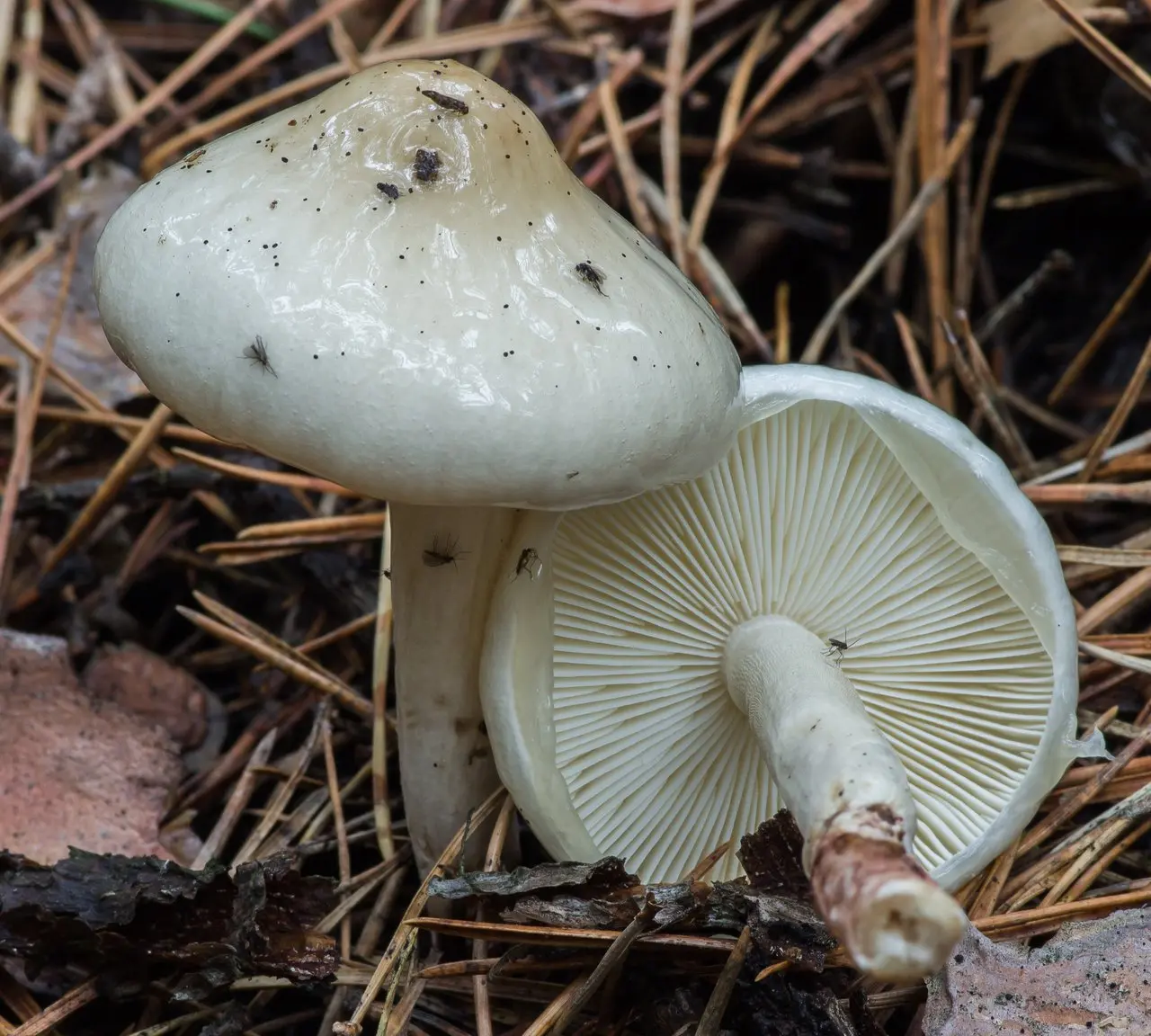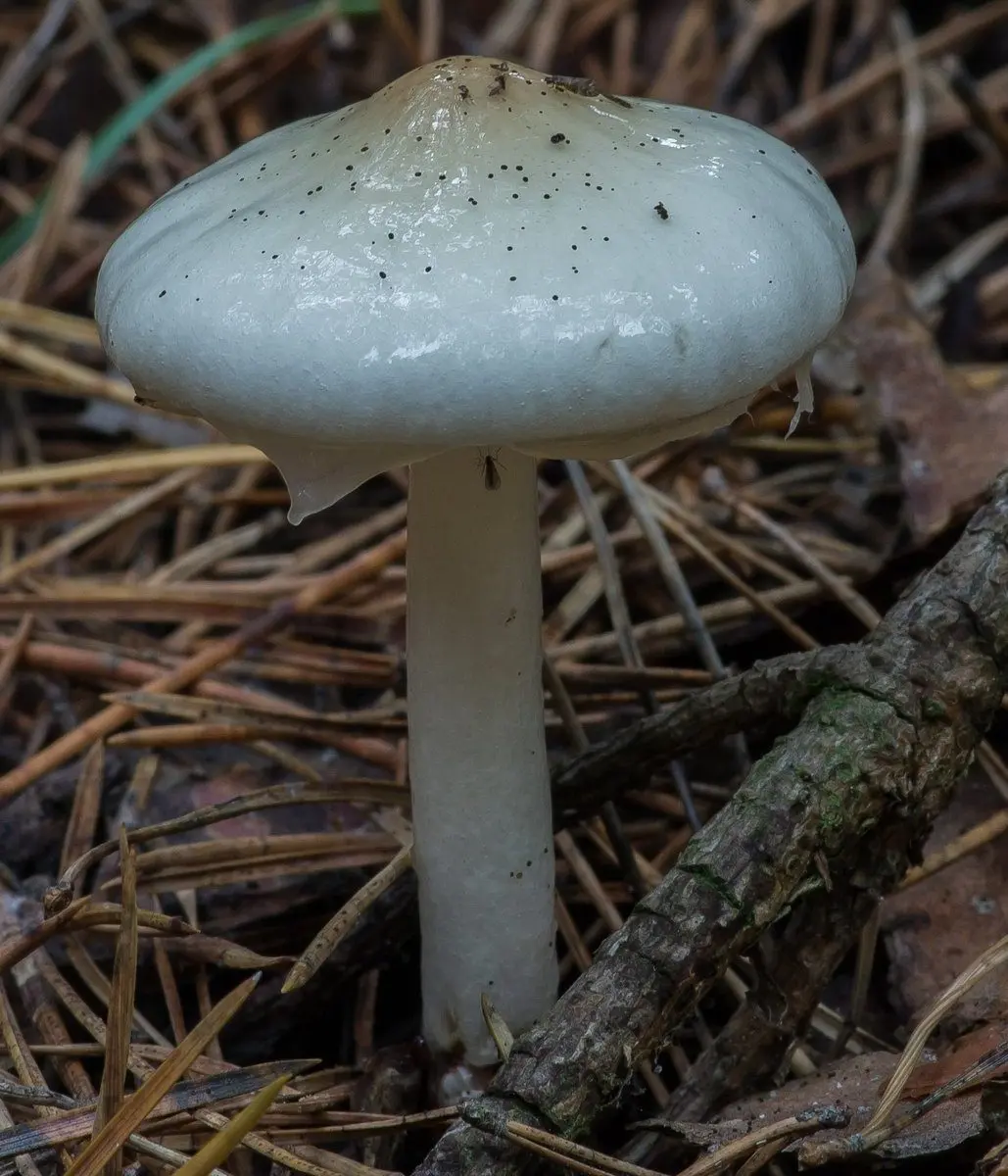Coated Limacella (Limacella illinita)
- Division: Basidiomycota (Basidiomycetes)
- Subdivision: Agaricomycotina (Agaricomycetes)
- Class: Agaricomycetes (Agaricomycetes)
- Subclass: Agaricomycetidae (Agaricomycetes)
- Order: Agaricales (Agaric or Lamellar)
- Family: Amanitaceae (Amanitaceae)
- Genus: Limacella (Limacella)
- Type: Limacella illinita (Smeared Limacella)
:
- Limacella smeared
- Agaricus subcavus
- Agaric coated
- Pipiota illinita
- Armillaria subcava
- Amanitella illinita
- Myxoderma illinitum
- Zhuliangomyces illinitus

Current name: Limacella illinita (Fr.) Maire (1933)
head: the average size is 3-10 centimeters in diameter, variations from 2 to 15 cm are possible. Ovate, hemispherical in youth, conical, then almost prostrate, with a slight tubercle. The edges of the cap are thin, almost translucent. Remains of a slimy veil may hang down along the edge.
The color is white, gray, whitish, light brownish or light cream. Darker in the center.
The surface of the cap of coated limacella is smooth, very sticky or slimy. In wet weather it is very slimy.
plates: adnate with a tooth or free, frequent, wide, white or pinkish, with plates.
Leg: 5 – 9 centimeters high and up to 1 cm in diameter. It looks a little disproportionately high compared to the hat. Central, flat or slightly tapering towards the cap. Whole, with age becomes loose, hollow. The color of the leg is whitish, brownish, the same color as the cap or slightly darker, the surface is sticky or mucous.
Ring: pronounced ring, familiar, in the form of a “skirt”, no. There is a slight mucous “annular zone”, more distinguishable in young specimens. Above the annular zone, the leg is dry, below it is mucous.
Pulp: thin, soft, white.
Taste: no difference (no special taste).
Smell: perfumery, mealy is sometimes indicated.
spore powder: white
Споры: 3,5-5(6) x 2,9(4)-3,8(5) µm, ovoid, broadly ellipsoid or almost round, smooth, colorless.
Oil limacella grows in forests of all types, found in fields, on lawns or on roadsides, swamps, meadows and sand dunes. Grows on the ground or litter, scattered or in groups, not uncommon.

It occurs in summer and autumn, from June-July to the end of October. Peak fruiting is in August – September.
Limacella spread is widespread in North America, Europe, Our Country. In some regions, the species is considered quite rare, in some it is common, but does not attract much attention of mushroom pickers.
Information is extremely contradictory, from “inedible” to “edible mushroom category 4”. According to literary sources, it can be eaten fried, after preliminary boiling. Suitable for drying.
We will carefully place this limacella in the category of conditionally edible and remind our dear readers: take care of yourself, do not experiment with mushrooms, the edibility of which there is no reliable information.
Smeared Limacella is a rather variable species.
7 varieties are indicated:
- Slimacella illinita f. illinite
- Limacella illinita f. ochracea – with a predominance of brownish shades
- Slimacella illinita var. argillaceous
- Limacella illinita var. illinita
- Slimacella illinita var. ochraceolutea
- Limacella illinita var. andraceorosea
- Limacella illinita var. rubescens – “Blushing” – in places of damage, with a simple touch on the cap or leg, at the break and cut, the flesh turns red. At the base of the stem, the color changes to reddish.
Other types of Limacella.
Some types of hygrophores.
Photo: Alexander.









